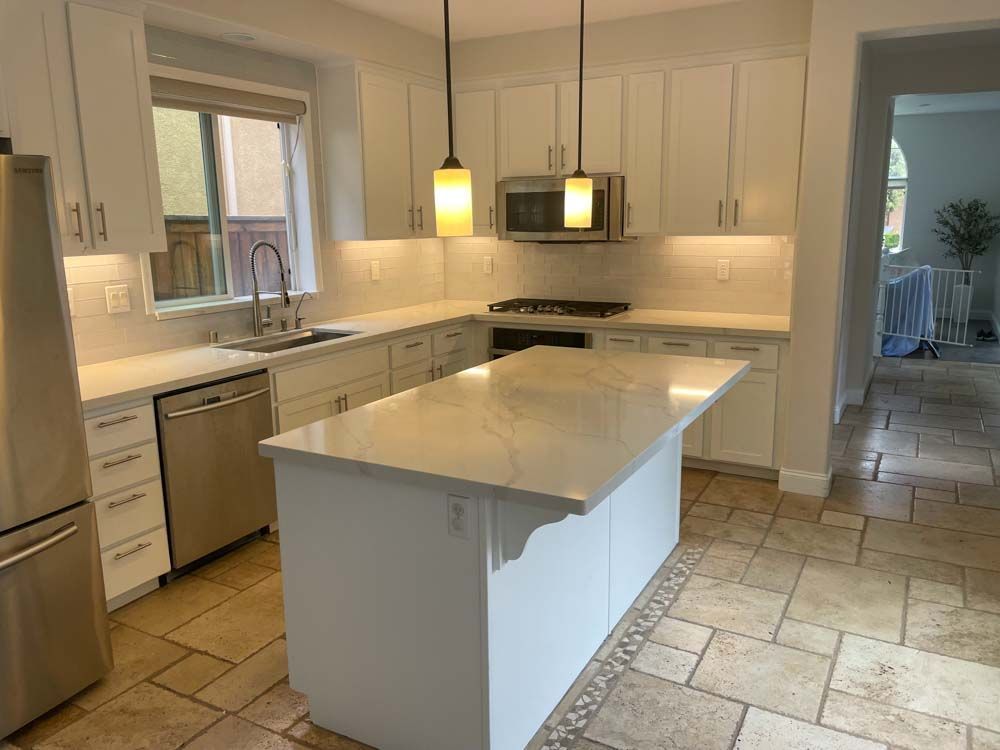The Importance of Proper Kitchen Lighting in Your Remodel
When planning a kitchen remodel, homeowners often focus on cabinetry, countertops, and appliances. However, lighting is one critical element that can make or break your kitchen's functionality and aesthetics. Proper kitchen lighting enhances usability, creates ambiance, and increases the overall value of your home. Here’s why lighting should be a top priority in your kitchen remodel and how to get it right.
The Role of Kitchen Lighting
Kitchen lighting serves three essential functions: task lighting, ambient lighting, and accent lighting. A well-designed lighting plan incorporates all three to create a balanced and functional space.
1. Task Lighting: Functionality First
Task lighting ensures that work areas such as countertops, sinks, and stovetops are well-lit for food preparation and cooking. Without proper task lighting, chopping vegetables, reading recipes, or cleaning can become difficult and even hazardous.
Best Practices for Task Lighting:
- Install under-cabinet LED strips to illuminate countertops.
- Use pendant lights over kitchen islands for direct lighting where needed.
- Ensure recessed lighting is placed correctly to minimize shadows in key work zones.
2. Ambient Lighting: Setting the Mood
Ambient lighting is the kitchen's primary illumination source, creating a warm and inviting atmosphere. It also helps to reduce harsh shadows and ensures the entire space is evenly lit.
Best Practices for Ambient Lighting:
- Opt for ceiling-mounted fixtures or recessed lighting to provide consistent brightness.
- Use dimmer switches to adjust lighting levels based on the time of day or mood.
- Choose warm white LED bulbs to create a cozy and welcoming environment.
3. Accent Lighting: Enhancing the Aesthetics
Accent lighting adds character and style to your kitchen by highlighting architectural details, backsplashes, or display cabinets. It can also help define different areas in an open-concept kitchen.
Best Practices for Accent Lighting:
- Install LED strip lights inside glass-front cabinets to showcase dishware.
- Use toe-kick lighting to add a subtle glow to lower cabinets or islands.
- Add decorative sconces to highlight unique design elements, such as open shelving or textured walls.
Choosing the Right Light Fixtures
Selecting the right light fixtures is essential for both aesthetics and functionality. Consider these factors:
- Style: Match fixtures with your kitchen’s design theme—modern, farmhouse, industrial, etc.
- Energy Efficiency: Choose LED bulbs to save energy and reduce long-term costs.
- Size and Scale: Ensure fixtures are proportionate to the space. Oversized pendants can overwhelm a small kitchen, while tiny lights may not provide enough illumination.
- Color Temperature: Aim to balance cool and warm tones (2700K-3500K) to create a natural look.
The Benefits of Proper Kitchen Lighting
Investing in a well-thought-out lighting plan for your kitchen remodel offers numerous benefits:
- Increased Safety: Good lighting reduces the risk of cooking and cleaning accidents.
- Enhanced Aesthetics: Thoughtful lighting design elevates the overall look of your kitchen.
- Better Functionality: Well-lit workspaces improve cooking efficiency and comfort.
- Higher Home Value: Buyers appreciate a kitchen with stylish and functional lighting, making it a strong selling point.
Final Thoughts
Proper kitchen lighting is more than just an afterthought—it’s a crucial component of your remodel that impacts both design and practicality. By integrating task, ambient, and accent lighting, you can create a kitchen that is not only beautiful but also highly functional. Whether you’re renovating for personal enjoyment or increasing your home’s value, investing in the right lighting will enhance the heart of your home for years to come.
If you’re planning a kitchen remodel and need expert guidance on lighting design, Development Dream Home is here to help. Contact us today to start creating your dream kitchen!


